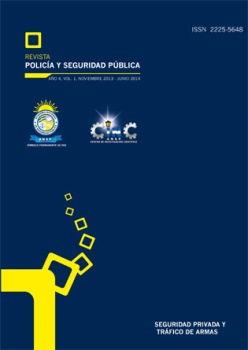El armamento de las pandillas salvadoreñas: análisis de su letalidad, poder de fuego e implicancias de seguridad pública
DOI:
https://doi.org/10.5377/rpsp.v4i1.1558Palabras clave:
seguridad pública, armas de fuego, artefactos explosivos, armamento artesanal, mercado de armas ilícito, poder de fuego y letalidad de las armasResumen
Desde su aparición, en la fase final del conflicto interno salvadoreño, las pandillas siempre hicieron uso de las armas de fuego disponibles en el mercado formal e ilícito. Una vez acabada la guerra y pese a la nueva normativa sobre la tenencia de armas de fuego, los miembros de las pandillas pudieron tener acceso a éstas bajo dos vías de adquisición: a través de la compra en el mercado comercial y construyéndolas de manera artesanal.
Esta temprana adquisición de las armas de fuego fue mutando a la adquisición de armas de mayor poder, sobre todo de fusiles de asalto y de los famosos trabucos, ahora capaces de disparar cartuchos de escopeta y no solo los calibres tradicionales anteriores (9x19 mm, .45 ACP, y .38). La causa podría vincularse directamente con dos factores, por un lado la guerra entre las dos principales pandillas, la “MS” y la “Barrio 18”, como era de esperarse, aumentó la necesidad de contar con un mayor poder de fuego y, por otro lado, la disponibilidad en el mercado de una gran cantidad de armas de fuego como fusiles de asalto y subametralladoras, producto de la época de la guerra.
Descargas
1141
Descargas
Publicado
Cómo citar
Número
Sección
Licencia
Derechos de autor
Los derechos de autor sobre cualquier artículo de investigación se transfieren por completo a Revista Policía y Seguridad Pública después de su publicación en la revista. La transferencia de derechos de autor incluye el derecho de reproducir y distribuir el artículo en cualquier forma de reproducción (impresión, medios electrónicos o cualquier otra forma).

